I’ve rounded up some top travel bloggers, many Dutch themselves or based in The Netherlands to tell my readers about what treats or foods that they consider to be part of every visit to Amsterdam, or anywhere else in The Netherlands. While Dutch food may not be entirely renowned, I promise that after reading this article, you’ll find yourself wondering…why the hell not!?
Kruidnoten, a Dutch treat for Sinterklaas.
Contributor: Lotte, Gezond Weekmenu
A very special Dutch treat are Kruidnoten, small round cookies about the size of a 1-euro coin that taste a bit similar to spiced biscuits. What makes Kruidnoten even more special is the fact that they are only available for a limited time throughout the year.
You see, Dutch people only eat Kruidnoten during the Sinterklaas. This unique Dutch food tradition cents around an old man with a long beard based called Sinterklaas. This figure is based on Saint Nicholas, the patron saint of children. During Sinterklaas, Dutch spoil kids with presents, Kruidnoten, and other sweets. It’s a real family holiday and always a real highlight for children.
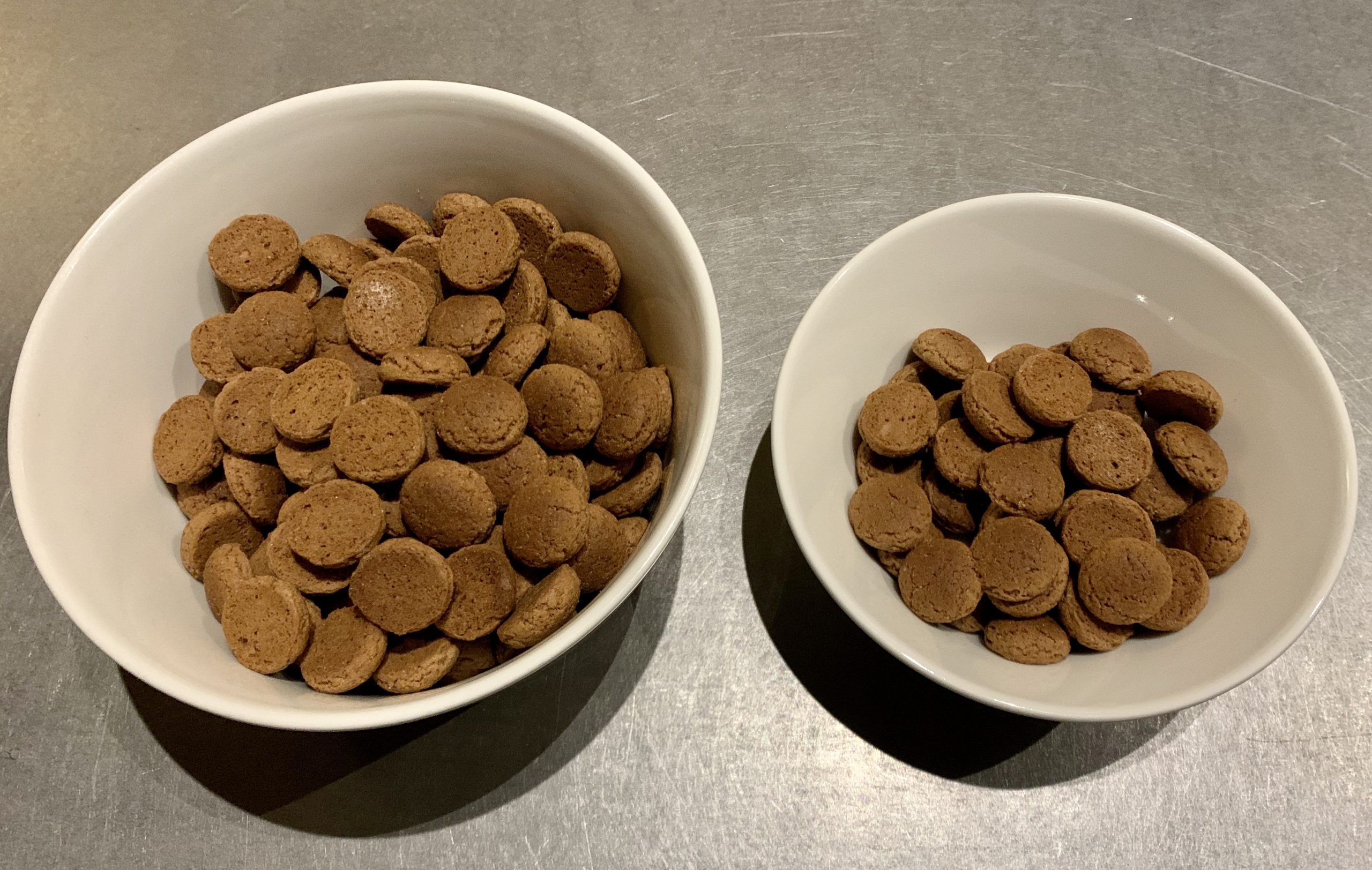
During the preparations for Sinterklaas, families often make their own Kruidnoten, though you can also buy them in any supermarket (sometimes as early as September!). Kruidnoten are truly a vital part of the Sinterklaas ritual in the Netherlands and a favorite treat of many Dutch people. The main ingredients of Kruidnoten are flour, butter, sugar, cinnamon cardamom, nutmeg, and a couple of other spices.
On the 5th of December, the Sinterklaas event takes place. Kids will often celebrate Sinterklaas in school as well and some companies even give their employees an hour or two paid leave so that all parents can go home in time to celebrate Sinterklaas with their kids.
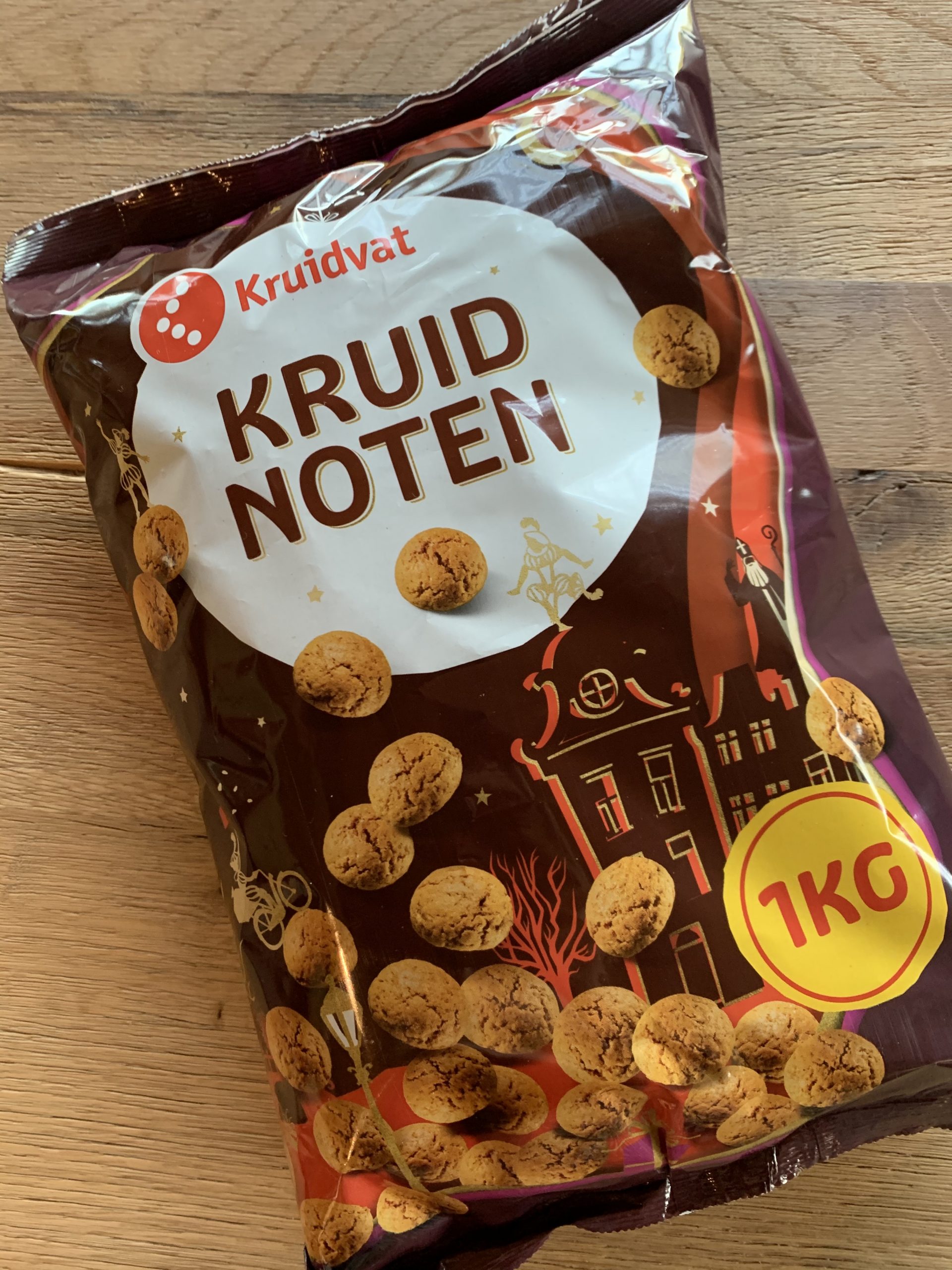
Dutch Apple Pie.
Contributor: Sydney, A World in Reach
There are so many amazing sweet Dutch foods and treats to sample when visiting Amsterdam, and one of the very best to try is a slice of traditional Dutch apple pie!
So, what makes Dutch apple pie special anyway? Dutch apple pie has been a staple in the Netherlands for centuries, and current recipes for the treat haven’t changed much from the original ones first published in the 1500s. The typical ingredients for the Dutch apple pie are a buttery, delicious crust along the bottom and around the edges of the pie and an apple filling made of crisp, tart apples with a spice mixture made from cinnamon, cardamom, ginger, nutmeg, and various other spices. A crumbly crust tops the pie. It is proper to serve a slice of the pie warm or hot, sometimes with whipped cream.
There are several places in Amsterdam to get a slice of Dutch apple pie, but definitely add a visit to Winkel 43 to your Amsterdam bucket list. This cute café in Amsterdam’s Jordaan neighborhood has the BEST Dutch apple pie in the entire city. Don’t skip out on a warm slice of pie topped with the café’s homemade whipped cream!
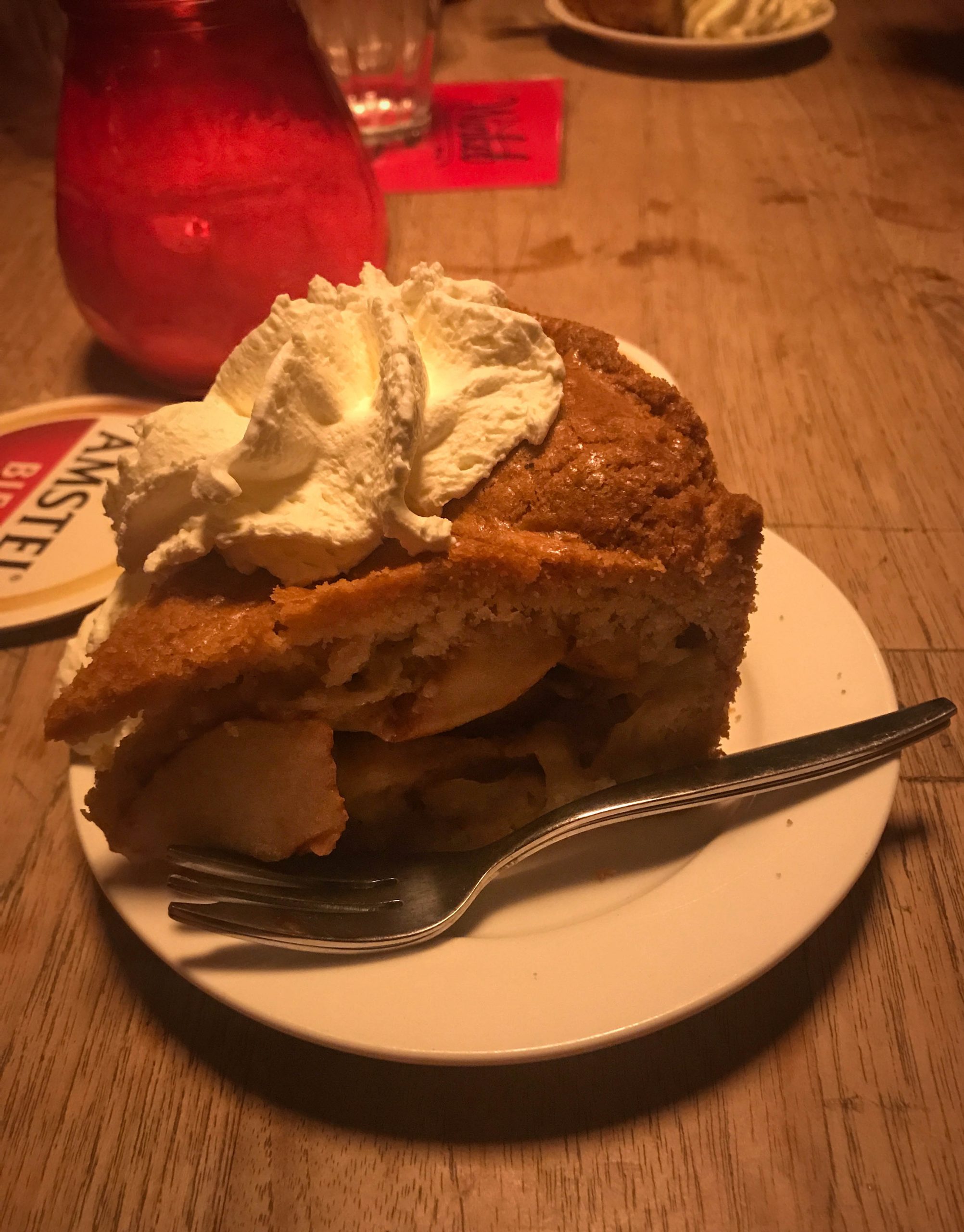
Pannekoeken.
Contributor: Erin, Pina Travels
Throughout history, different variations of pancakes have shown up in the cuisine of countries around the world. In The Netherlands, you can find versions of pancakes in cookbooks as far back as the 17th century. Today, Dutch pancakes or “pannenkoeken” are a popular meal. Although pannekoeken are made in the same style as American pancakes, they have some differences. Pannekoeken are larger and much thinner, a little more similar to a crepe. While in North America, you eat pancakes for breakfast, Dutch eat pannekoeken are for dinner.
Most restaurants that serve pannekoeken offer various types. Some will have ingredients like bacon, apple, raisins, or cheese mixed in. And, unlike in North America, the syrup isn’t a common topping for Dutch pancakes. Instead, Dutch restaurants serve “appelstroop” with pannenkoeken, which is syrupy apple butter.
It’s possible to try pannenkoeken in most Dutch cities – I’ve had it in Amsterdam, Groningen, and Leiden. Often, there will be a restaurant dedicated to making them, known as a “Pannenkoeken Huis.” To try them while visiting Amsterdam, head to Upstairs Pannenkoekenhuis or The Pancake Bakery. Or, take a ride on the “pannenkoekenboot!” Yes, that’s right – the pancake boat. Hop aboard for an all-you-can-eat pancake feast that will take you cruising along Amsterdam’s waterfront.
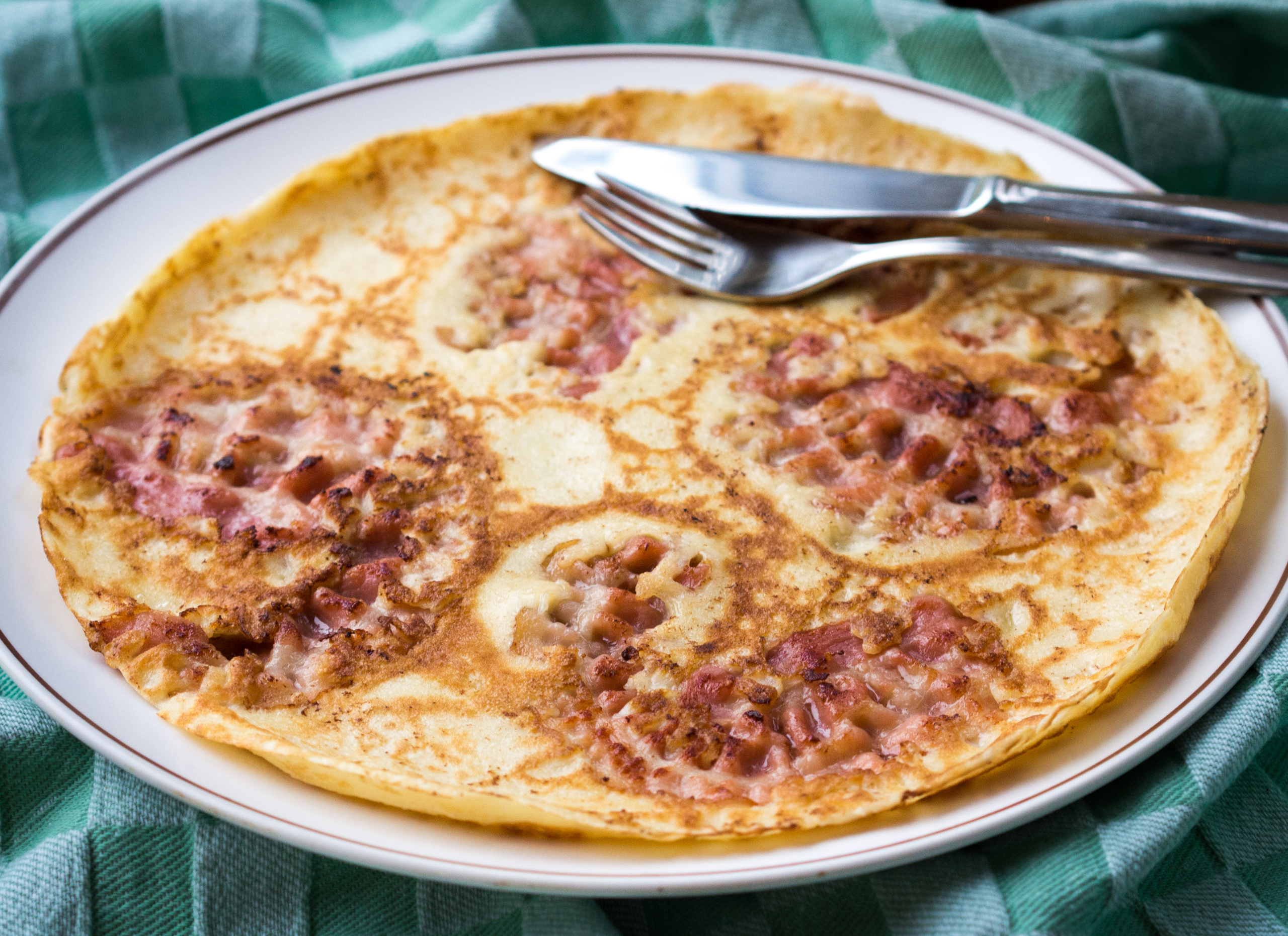
Oliebollen.
Contributor: Angelie, Ask the Dutch Guy (Recommended by Frans)
Oliebollen, or oliebol (oil ball), is a traditional Dutch beignet. Despite its name, it’s actually called different names in various parts of Europe. The delicious dough is a variety of dumpling that is deep-fried. It is made from eggs, yeast, flour, salt, and baking powder, served with powdered sugar.
Eating these sugary lumps of goodness started to ward off the whims of a terrible pagan goddess, Perchta. During the 12 days of Christmas, it is said that the goddess flies around with evil spirits to look for something to eat. The goddess is said to slice open the stomachs of those who’d already eaten. According to tradition, eating oliebollen will protect them due to the oil that will make the sword slide off.
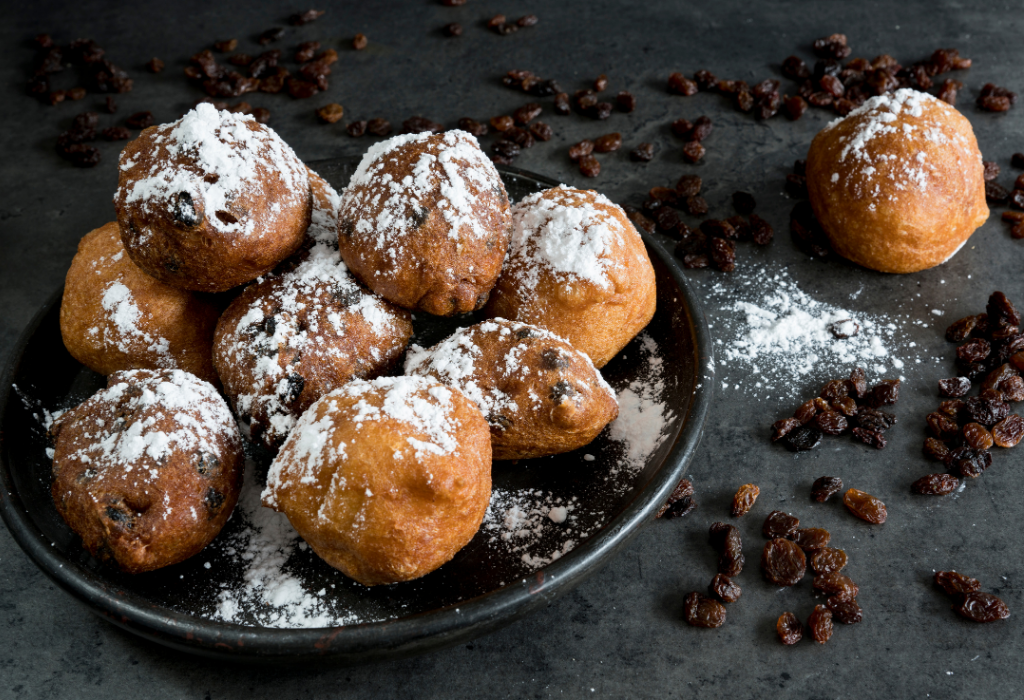
Despite the story about Perchta, nobody really knows when the recipe for the oliebollen was first written down. The earliest mention in cookbooks was in the 17th century. Today, the recipe has not changed much.
In the Netherlands, Oliebollen are traditionally eaten on New Year’s Eve, when the weather is chilly. It is usually paired with a sparkling glass of champagne and is eaten while watching the fireworks or in front of the fireplace or bonfires.
Manneken pis French Fries.
Contributor: Mark, Wyld Family Travel
Located just a few hundred meters from Amsterdam Central Station on Damrak is Mannekenpis french fries. The Mannekenpis french fries have become the darlings of social media in the last few years with their amazing fries and abundance of topping you can get on their fries. Mannekenpis use only homegrown potatoes from the Zeeland area of the Netherlands. The potatoes are cut fresh daily after arrival into these amazing fries you will get served.
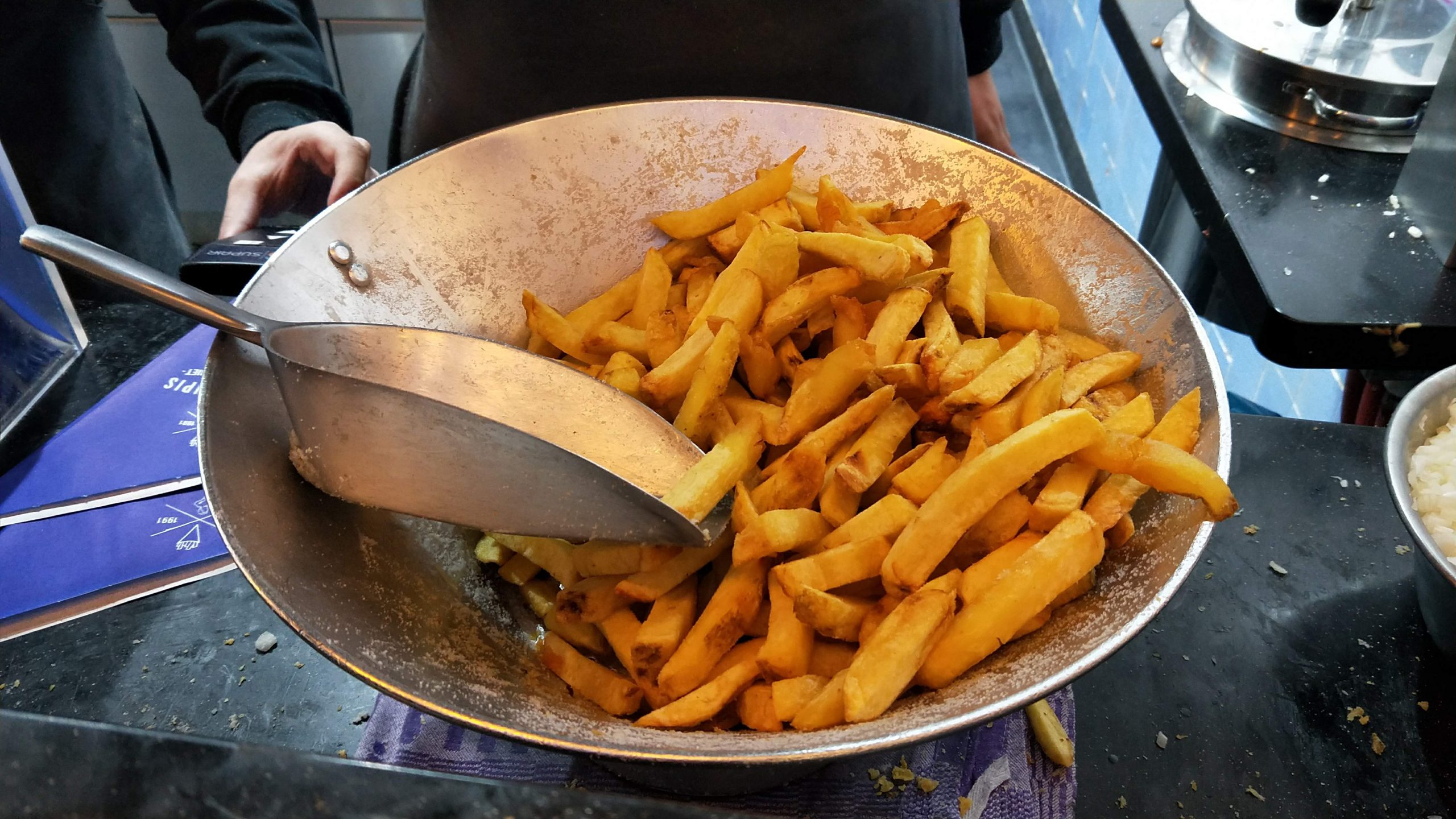
The fun comes when you have to choose from the 20 different topping that comes with your order of fries. You will such topping as Flemish mayo, cocktail sauce, curry sauce, cheese sauce, satay sauce, green pepper sauce, and more. Your fries come served in a cone with large dollops of sauce on top. Luckily they provide you with a small fork and serviette to wipe your mouth. This place is so popular you may find yourself in a lengthy line waiting for your serving of fries. Eating Manneken pis french fries is one the best things to do in Amsterdam.
Limburgse Vlaai.
Contributor: Bruna, Maps ‘N Bags
“Before you go on a day trip from Amsterdam to try the Limburgse Vlaai in the province that lends its name to it, Limburg, read this out.
In Diemen, one of the central neighborhoods in Amsterdam, you can taste this delicious southern treat called Limburgse vlaai in Dutch.
You might be wondering where you can find the Limburgse Vlaai so far away from its traditional region. Well, there is an excellent patisserie called Limburgia Diemen (Ouddiemerlaan 195, 1111 GZ), and it is absolutely worth the trip.
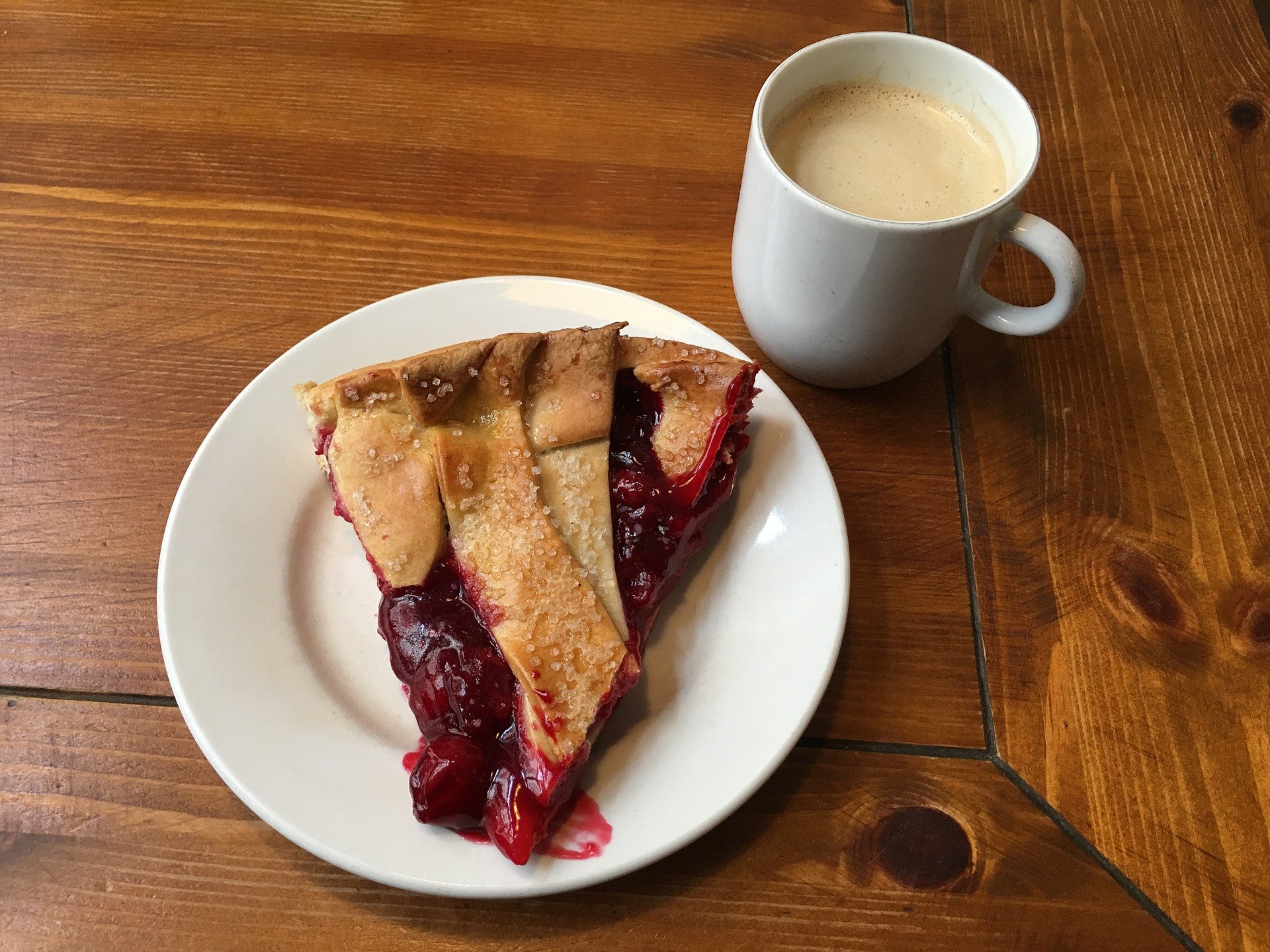
If you order in advance, you will find the exact flavor you want, so you might consider doing that.
But, what is a vlaai? Well, it is a sweet pie consisting of a pastry and diverse different fillings. There are all sorts of flavors you can choose from rijstevlaai (rice pudding pie), kruimelvlaai (crumbed butter and custard pudding pie), kersenvlaai (cherry pie), and many others.
Dutch people usually eat vlaai on birthdays or any other special celebrations, but obviously, you can eat it whenever you feel like it. Trust me, you’ll want more!
Stroopwafel.
Contributor: Jessica, Uprooted Traveler
Stroopwafel, one of the most well-known examples of Dutch food, literally means “syrup waffle” in Dutch, is pretty much exactly what it sounds like- a caramel filling sandwiched between two wafer-thin layers of crispy waffles. To make stroopwafel, the batter is poured into a hot waffle iron until the dough is crispy. The dough is then removed and, while still piping hot, the edges are cut off to create a perfectly round disc of deliciousness. A caramel filling, made from syrup, brown sugar, butter, and cinnamon, is then spread between two of the crispy waffles and, as the filling cools, it binds the waffles together to make a satisfyingly crunchy, sweet treat.
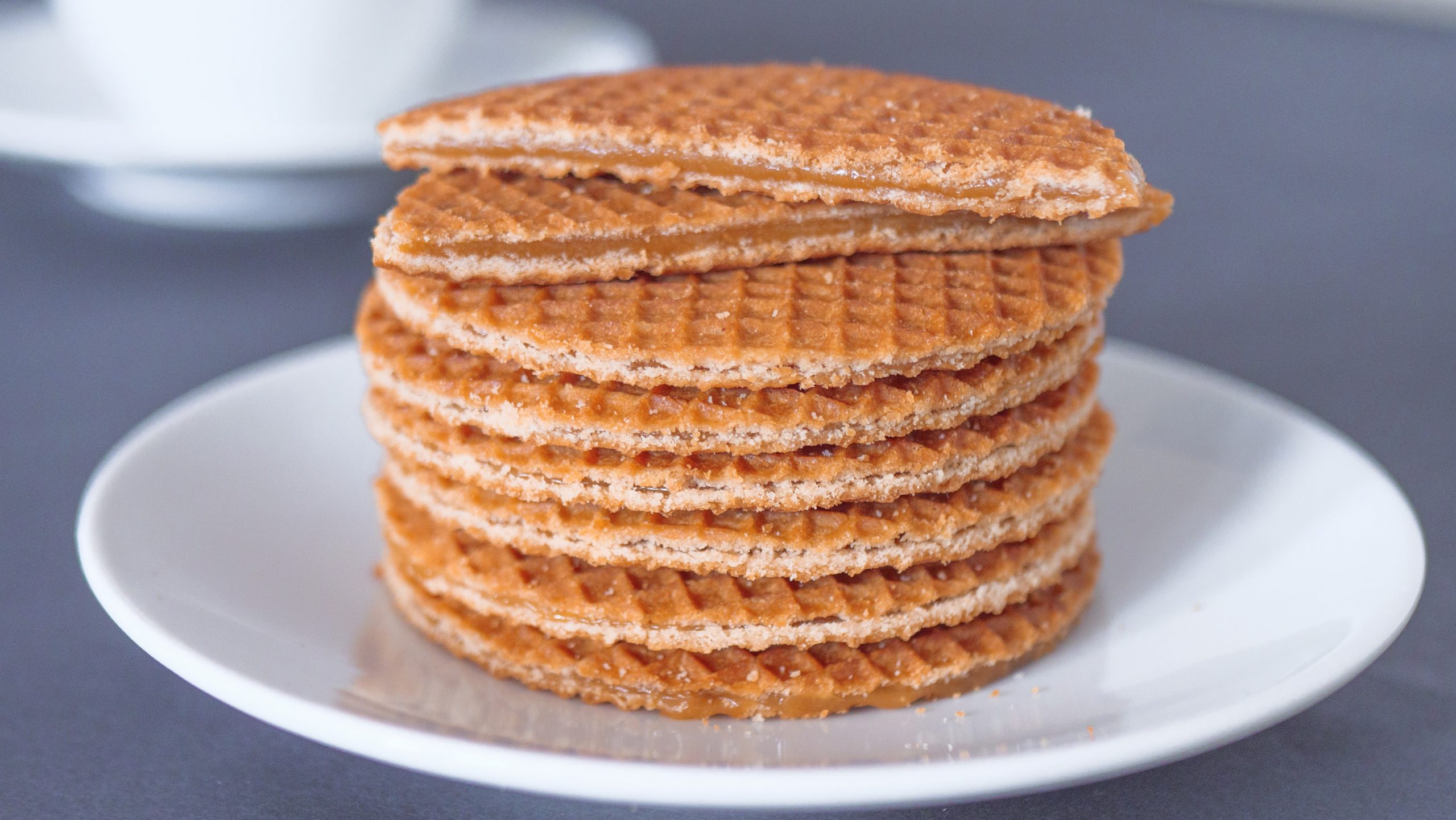
Legend has it that stroopwafels originated in the Dutch city of Gouda, by bakers trying to cobble together leftover scraps with sweet syrup in the early 19th century. By 1870, stroopwafels were being made by bakers in other cities around the Netherlands, and by the 19th century, factories had started churning out these tasty treats. Today, you’ll find stroopwafel everywhere in the Netherlands, from market stalls and street vendors to large grocery stores. While stroopwafel is traditionally made with butter, milk, and eggs, the Netherlands is even cooking up vegan varieties of this Dutch classic- you can pick up a plant-based version at Vegabond, a vegan deli, and store, located in Amsterdam.
Poffertjes and Tompauce.
Contributor: Claire, Claire Pins Travel
Two traditional Dutch desserts to try on your next trip to the Netherlands are poffertjes and tompouce (also spelled tompoes).
First, poffertjes are miniature puffed pancakes that taste similar to a yeasted doughnut and are typically served with butter, powdered sugar, and occasionally seasonal berries. This bite-sized food is made on a specialized poffertje pan, which has several shallow indentations that are filled with batter and cooked until puffed and golden. While this fun snack is available year-round in the Netherlands, it is particularly popular street food and you can often find it during holidays and celebrations or at markets and fairs.
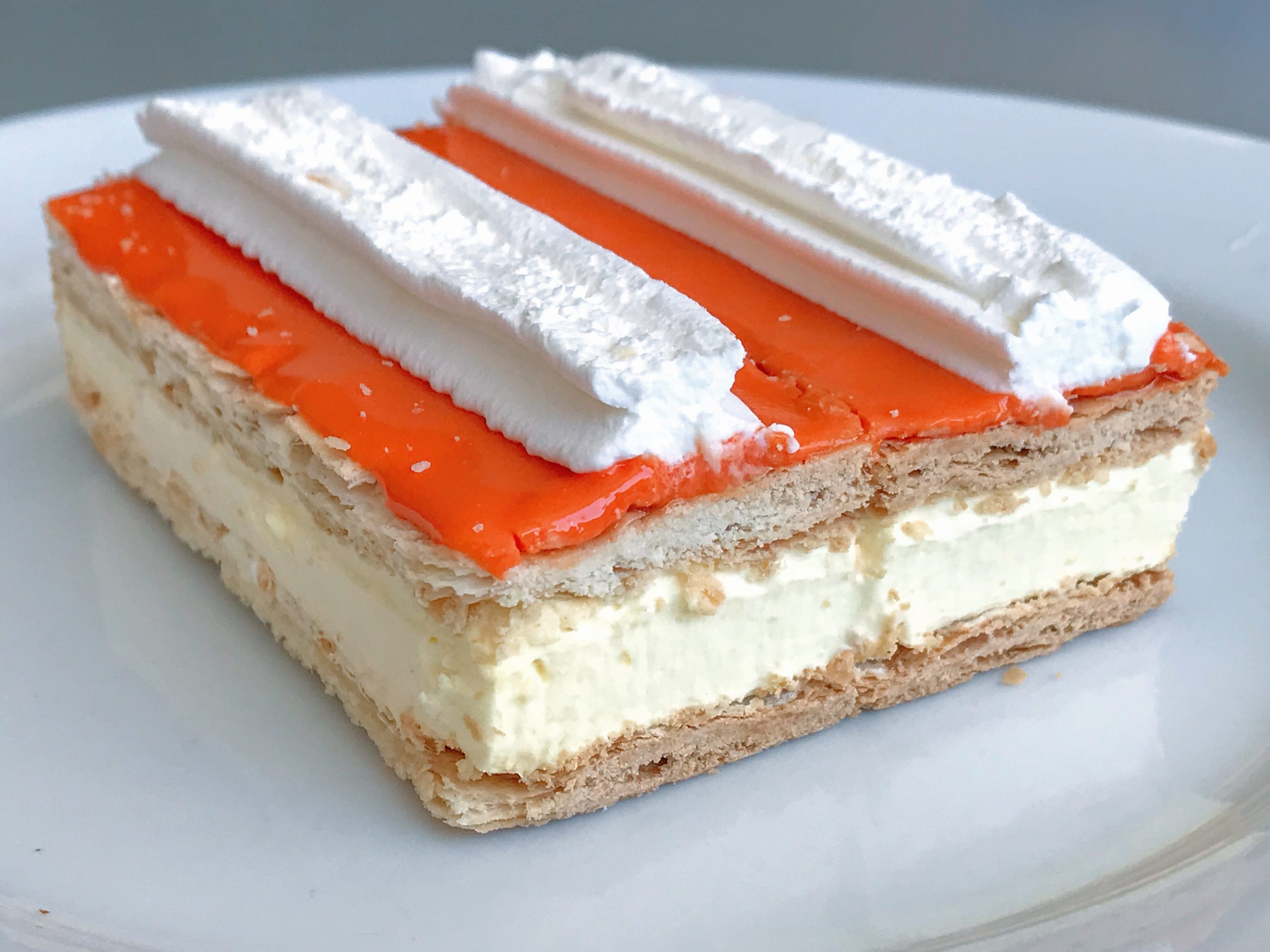
The name of the second dessert is tompouce, which is the Dutch version of a ‘millefeuille’. It consists of custard or pastry cream sandwiched between layers of puff pastry. It is very similar to a ‘Napoleon’ cake and typically features a sweet pink icing, sometimes topped with colorful sprinkles. Tompouce also has a special orange icing to celebrate the annual holiday of King’s Day every April, as the color has a special connection to the royal family.
While both of these desserts are available at typical Dutch supermarkets, a fun place to try them is the Albert Cuyp Market in Amsterdam, which is one of the largest in Europe and features several vendors selling these traditional dishes. The market is open Monday to Saturday and is located in the south end of the city, around 3 kilometers from Amsterdam Centraal Station.
Another Vote for Poffertjes!
Contributor: Dymphe, Dymabroad
“One of the best must-try foods in Amsterdam is the sweet treat poffertjes. Poffertjes are Dutch tiny pancakes that are very delicious. Besides their small size, they are different from pancakes because they are more fluffy and thicker.
There are many places in Amsterdam where you can buy poffertjes. There are markets where you can try them and there are restaurants that serve them as well. At pancake restaurants, you can often find poffertjes on the menu. If you don’t want to go to a market or a restaurant, you can also buy them at a supermarket in Amsterdam. Just microwave them before you eat!
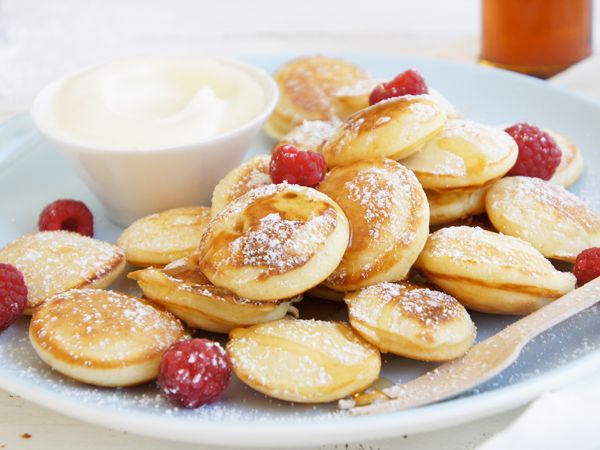
Powdered sugar and butter are most common toppings. There are many different options you can choose from. Especially if you are going to get them in Amsterdam, and in particular at the Albert Cuyp market, you can choose from a lot of different toppings, such as chocolate, whipped cream, and strawberries.
A typical serving of poffertjes at a market contains about 10 poffertjes and you get them on a small cardboard plate with a small fork.
So the next time you go to Amsterdam, you should definitely try out poffertjes. What’s also great is to take a photo of these delicious tiny pancakes at one of the most Instagrammable places in Amsterdam to remind yourself of this tasty treat!
The Snack Wall.
Contributor: Maartje & Sebastian, Tidy Minds
The Dutch aren’t known for their exquisite cuisine and many must-try foods in Amsterdam aren’t healthy in any sort of way. The snack wall might just top all of the unhealthy options: it’s an entire wall filled with fried snacks, most of which you’ll only get to try in the Netherlands.
You can get fries on pretty much each Amsterdam street corner. Not in a restaurant setting, but to eat at a or to go. Some of those fries shops – called ‘snack bars in Dutch – are a bit more special than others: they have those typical Dutch snack walls.
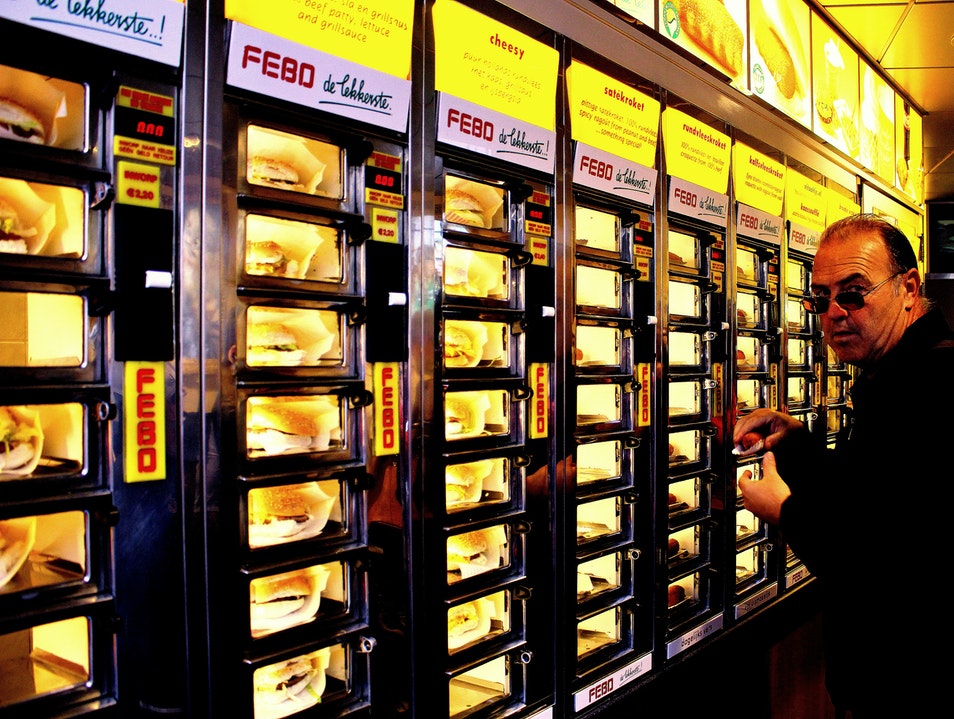
The snack walls are an easy way for the vendors to sell their fried snacks. They put the snacks in the walls from their end and you can buy them and open a small window for the snack you’d like on your end. The walls are warm, keeping your snack warm and sort of fresh. It’s easy for the vendors and you don’t have to wait in any line or for your snack.
Most of the snacks are fried, meat-based, and typical Dutch, like the ‘kroket’ (breaded meat-stuffed snacks) or ‘frikadel’ (minced-meat hotdog). It is actually surprising how many choices you’ll have. Vegetarians should choose the ‘kaassoufle’ (with cheese) or vegetarian ‘bamihap’ (breaded snack with bami) You can find the ‘snackbars’ all around Amsterdam and the Febo brand usually has a snack wall like this.
Bitterballen.
Contributor: Stephanie, Wandering Why Traveler
One snack that always stands out in my mind (and on my taste buds) from my time in Amsterdam is bitterballen. It was so delicious in fact, that I found myself actually sad when there was no more left, ha! I couldn’t believe the degree to which each of them was BURSTING with savory flavor.
While a lot of ‘deep fried’ food may be flavorless, that is so not the case with bitterballen. Makers of it roll a roux based stew, tons of meat, sometimes chopped vegetables like carrot, a ton of spices (like nutmeg), and beef stock (which gives it a lot of flavor) into balls that are refrigerated for some time. Those balls are then breaded and fried where they’re served to you piping hot.
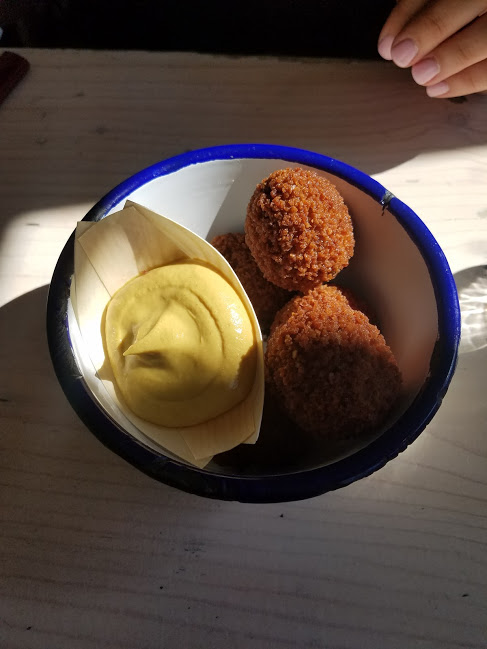
Herring.
Contributor: Anne, Packing Light Travel
An advantage of touring the Netherlands by bike and barge, especially one that begins and ends in Amsterdam, is the opportunity to burn calories accumulated from all that must-try Dutch food. Our cycling route took us through Gouda (pronounced Howda), namesake of the famous Dutch cheese and birthplace of stroopwafel, first made in the early 19th century. We marked the end of the cycling tour with a celebratory meal of Indonesian delicacies influenced by the Netherlands’ colonial past.
In Amsterdam, our love affair with the Dutch food and culinary scene continued with a Hungry Birds’ food tour. We were introduced to several traditional favorites, including bitterballen, poffertjes, and raw herring. Raw??? Don’t be put off by “raw.” Think of it as the Dutch equivalent of sushi. The salty fish from the North Sea is delicious, and one of the signature foods of the Netherlands. In fact, some regard it as the national dish. The herring stop at Vishuisje Herengracht is the place for the best and freshest herring in Amsterdam. The haringkar (herring stand) is on Utrechtsestraat at the Herengracht canal.
The herring was meticulously arranged on plates with toothpicks sporting Dutch flags and garnished with a side of pickles and chopped onion. We enjoyed it overlooking the Herengracht canal with several bicycles parked in the foreground. It doesn’t get more Dutch than that!
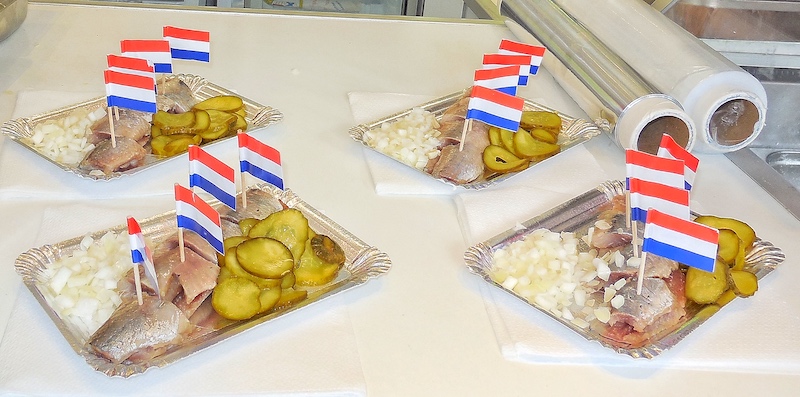


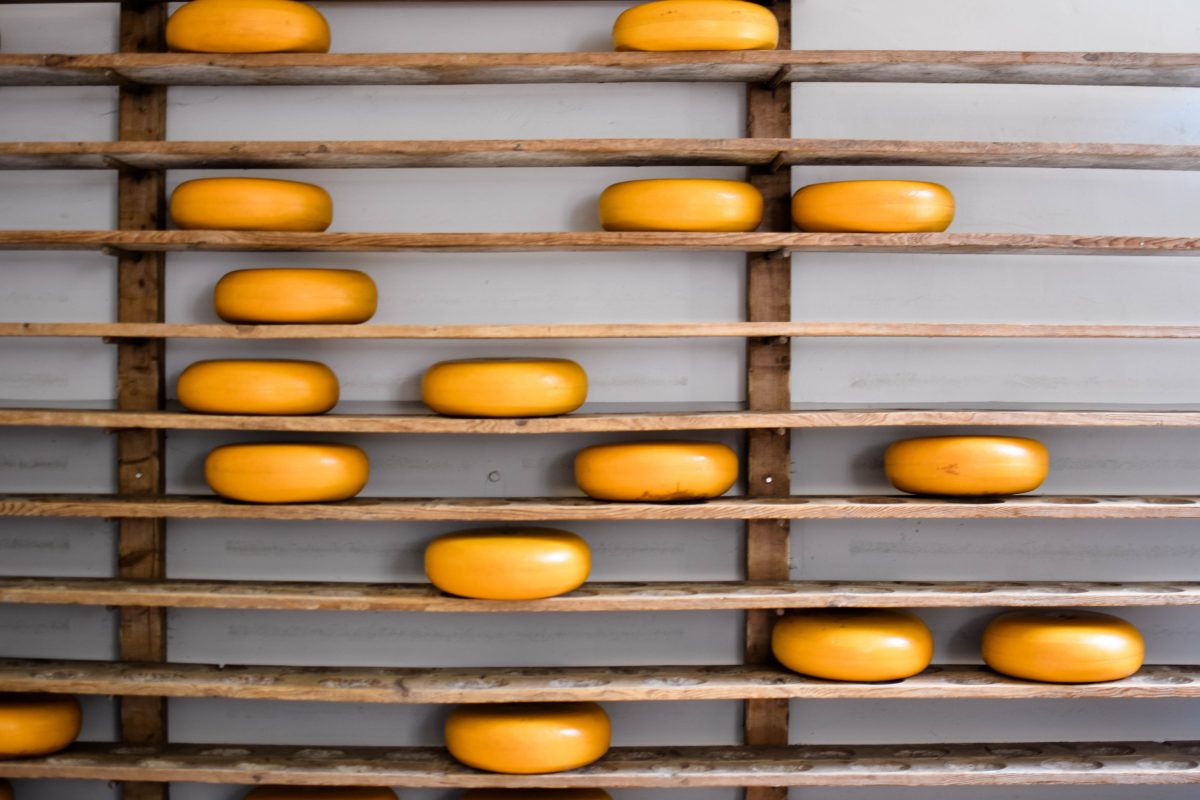

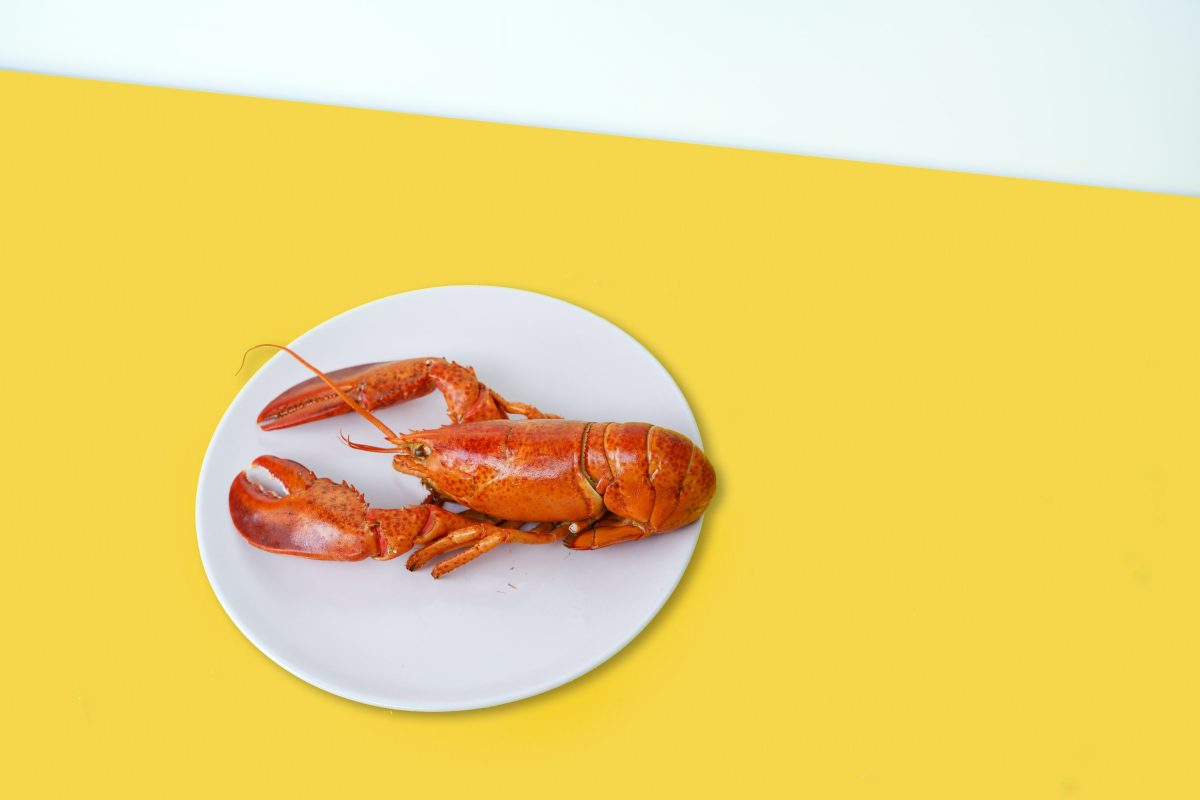
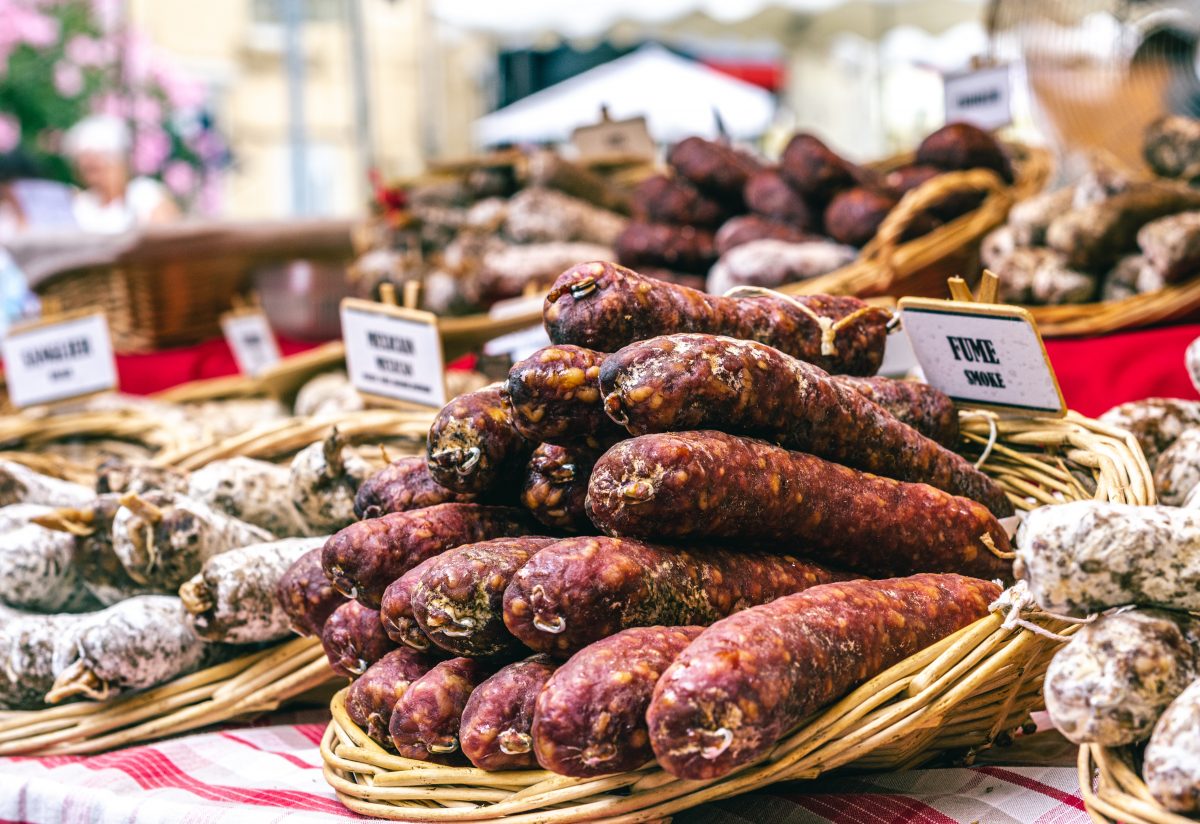
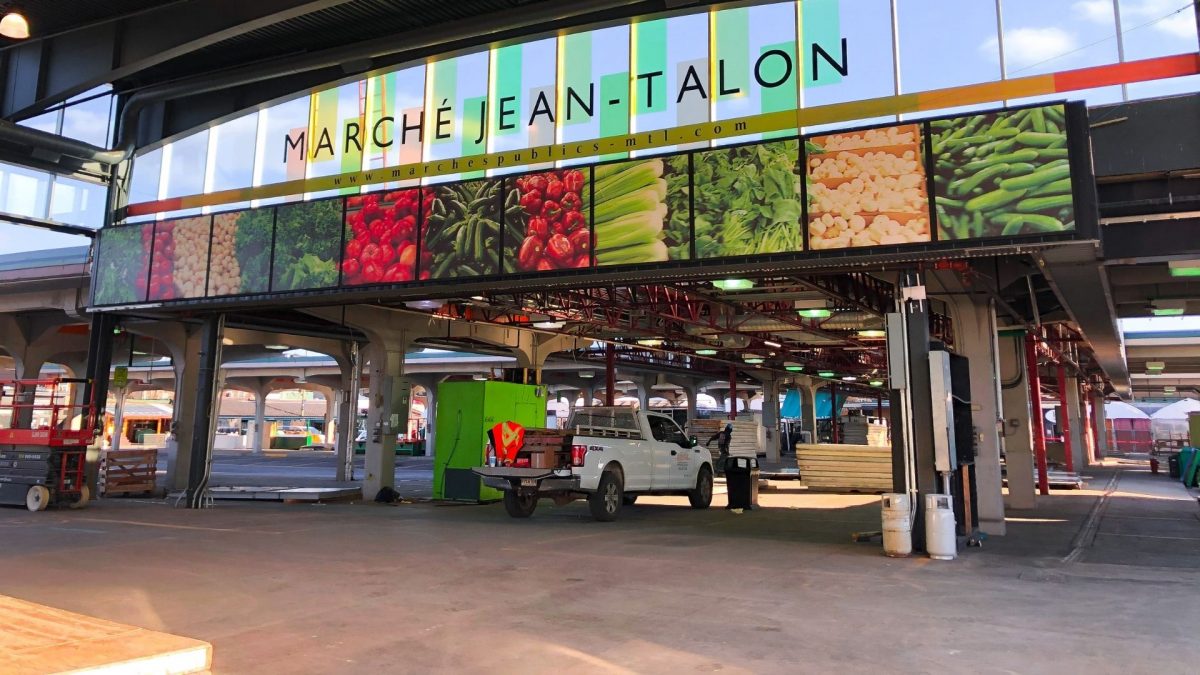
I need to go back to The Netherlands, because I missed all of this deliciousness! (Though I don\'t regret missing the herring. Not at all.)
Reply